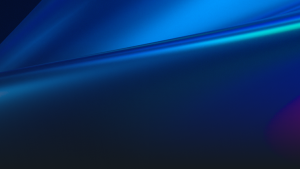When you’re first starting out on your observability journey, it can feel like navigating a new city where you don’t know the language. That’s especially true if you’re also learning a new tool at the same time. Fear not, fellow traveler, this blog post will highlight some key features to get you off to a great start with the New Relic observability platform.
One of the exciting things about New Relic is that there are loads of features and capabilities. We proudly boast “observability for all engineers” no matter your role—DevOps, infrastructure, network, security. If you’re looking for insight into your tech stack, then an all-in-one observability solution is what you need.
But there are so many features and capabilities. Where do you begin? It’s a lot, we know. Confidentially, even those of us who’ve been educating customers about the New Relic platform for years can get overwhelmed when new features are rolled out!
To get you started with New Relic, here are five areas you can focus on first.
1. Take advantage of the guided installation.
First things first—you have to get your data into the platform. Again, this is an area where we offer lots of options, as evidenced by our 20 Ways To Send Data to New Relic video.
Before investigating those options, though, try using our guided install by selecting the Add Data capability from the main menu. You’ll get a step-by-step walkthrough of installing New Relic agents in your environment.
2. Explore different ways of viewing your data.
Once your data is loading into New Relic, there are several ways you can view it. When you first log into your account you’ll see the default All Entities list view. There you’ll see a list of your entities grouped by entity type.
Generally speaking, an entity is anything you're tracking inside New Relic. For a deeper dive on how New Relic defines an entity, check out our documentation, Learn about New Relic entities.
The more important thing to note here is that the default List view is only one way to view your data. In the All Entities view, there are also New Relic Navigator and Lookout options. In the Navigator view, you can view your entities with red, yellow and green, stoplight-style shading to indicate each entity's health based on its alert status.
The Lookout view provides a bubble chart style of visualization to help you spot performance issues across key metrics, known as golden signals. The monitored metrics vary depending on the entity type.
You can mark your most frequently viewed entities as favorites by selecting the star (☆) next to the entity name. Favorites are always sorted to the top of your lists. You can also filter your entities, based on various attributes, and save those views.
3. Learn how to query your data.
Now that we’ve covered how to get your data into the New Relic platform and view it, let’s talk about exploring the data more thoroughly and writing queries. Why? Well, at some point you're going to start asking questions about your data.
“Which five cities experienced the worst page loads for my web app over the past 24 hours?”
“How does my average throughput over the past 30 days compare with the 30 days prior?”
“Which customer had the highest order total this quarter?”
In addition to the curated charts and views that you’ll see throughout the platform that show key performance data, you’ll find a few different ways to directly explore your data.
The first is using the Metrics & Events capability. It's an easy, point-and-click way to navigate your data and quickly generate charts. Learn more in our Introduction to the metrics and events data explorer documentation.
Starting your query journey with the Metrics & Events capability is also an excellent way to learn the mechanics of the New Relic Query Language (NRQL). You’ll notice at the top of the screen that as you point and click, the underlying NRQL query is displayed. If you hover over that query there is a button that appears. Select Edit in the query builder, and you’ll see a screen like this:
Select Query Your Data from the main menu to open the New Relic query builder. Using this feature you can hone your skills by writing queries directly using NRQL.
Not a NRQL expert? That’s okay. We’ve got you covered. Check out our Introduction to NRQL: the language of data documentation. Or, you can get hands-on practice with your own data using the NRQL Lessons app. You can add the NRQL Lessons app to your account by selecting the Add Data capability from the main menu, searching for nrql lessons, and clicking the Add this app button.
4. Navigate entity relationships and contextual data.
Are you feeling more confident yet? If so, great! Let’s dig a little deeper. If not, set this section aside for now, and come back to it when you've got your feet under you. Don't worry, it'll happen faster than you think.
One of the beauties of an all-in-one observability platform is the ability to start with a broad view of your architecture, and progressively dig deeper into the details. Two important concepts in understanding your system are the relationship between components (or entities) and the context behind the data.
There are a number of features in the New Relic platform that help you to visualize relationships and context, and we encourage you to explore them further to learn more. Here are a few to get you started:
- Automap—Easily visualize the relationship between entities.
- Distributed tracing—See full transaction timing across multiple services, and even internal method calls, in your distributed systems.
- Logs in context—View correlated log details alongside your other telemetry data.
- Tags—Decorate your telemetry data with the information that matters to you, such as identifying the relevant owner, team or environment.
- Workloads—Create custom groupings of entities so that you can see activity and health at-a-glance via an aggregated view.
5. Find help and share your feedback.
There are several ways to get help when you need it. We suggest bookmarking the following sites:
- docs.newrelic.com—New Relic documentation
- forum.newrelic.com—Explorers Hub (New Relic community forums)
- learn.newrelic.com—New Relic University, self-paced and instructor-led courses
Additionally, there's a Help & Support option on the Help menu.
Finally, we want you to have a great customer experience. If something is working really well for you, tell us about it. But, even if things are not quite working the way you expect, we want to hear that, too. Send us your feedback, also available on the Help menu.
Étapes suivantes
Are you interested in learning more about New Relic platform fundamentals? Check out our Introduction to the New Relic platform documentation. Or, consider signing up for one of our free instructor-led webinars.
If you're not already a New Relic user, you can become a hands-on observability practitioner by creating a free account. Your account includes 100 GB/month of free data ingest, one free full-platform user, and unlimited free basic users.
Les opinions exprimées sur ce blog sont celles de l'auteur et ne reflètent pas nécessairement celles de New Relic. Toutes les solutions proposées par l'auteur sont spécifiques à l'environnement et ne font pas partie des solutions commerciales ou du support proposés par New Relic. Veuillez nous rejoindre exclusivement sur l'Explorers Hub (discuss.newrelic.com) pour toute question et assistance concernant cet article de blog. Ce blog peut contenir des liens vers du contenu de sites tiers. En fournissant de tels liens, New Relic n'adopte, ne garantit, n'approuve ou n'approuve pas les informations, vues ou produits disponibles sur ces sites.



